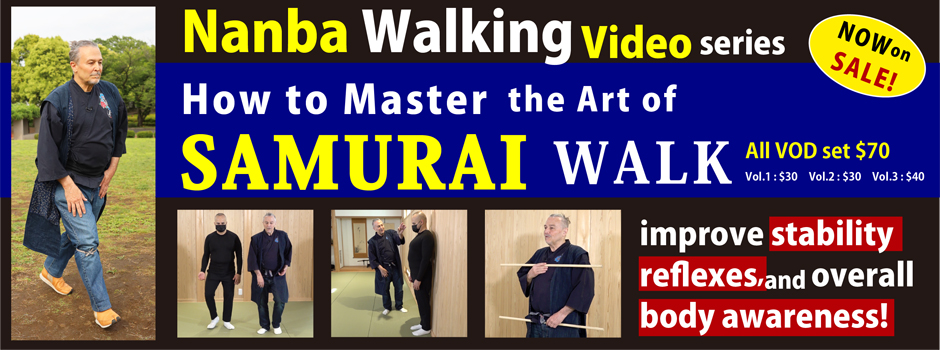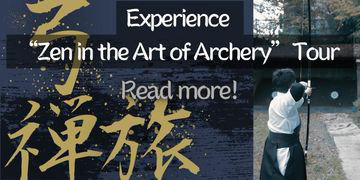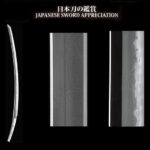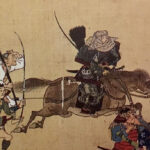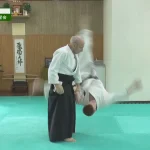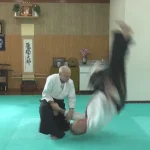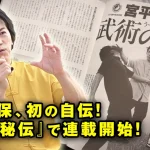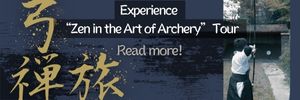How to Master the Art of SAMURAI WALK Vol.2 【Nanba Flow Movements & Nanba Assist】
Nanba Balance Techniques: the Art of Resetting
Here we show the importance of balance exercises in resetting and reconnecting the body. I explain three different experiments that can help improve balance and flexibility. The first experiment involves focusing on the more flexible side of the body to teach the less flexible side how to move. The second experiment suggests a different approach to stretching forward and backward to avoid tension in the back of the knees. The third experiment involves warming up the hip joint before walking to improve the gliding sensation and create a lighter feeling in the hips and pelvis. We conclude by emphasizing the importance of incorporating these exercises into your daily routines to improve movement, balance, and overall well-being.
Twisting the Body Right and Left
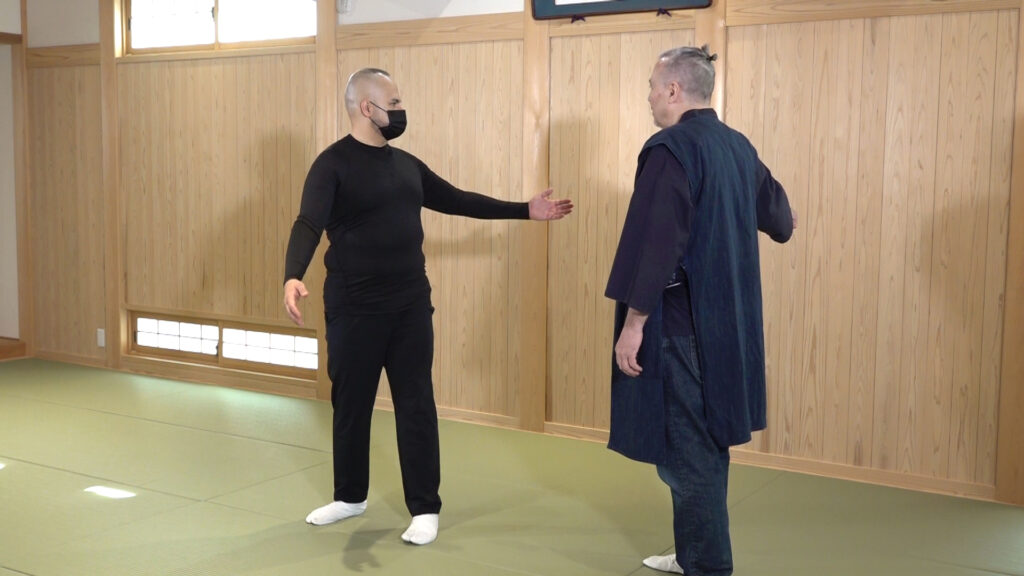 An easy way to check and reset the balance of the body is to try twisting the body slowly to one side and then the other. Don’t force the stretch, but rather see how far it can move comfortably, noting the place on the wall that your arm points to. After doing the stretch then release the arms and lower back to return to center. Perform the movement slowly so that you can see which side feels easier. Then repeat the stretch on the easier side three times, engaging the whole body down to the legs each time, and releasing the arms and lower back to return to center. Then repeat just once on the side that was less easy the first time, and note your improved flexibility by how far the arm turns.
An easy way to check and reset the balance of the body is to try twisting the body slowly to one side and then the other. Don’t force the stretch, but rather see how far it can move comfortably, noting the place on the wall that your arm points to. After doing the stretch then release the arms and lower back to return to center. Perform the movement slowly so that you can see which side feels easier. Then repeat the stretch on the easier side three times, engaging the whole body down to the legs each time, and releasing the arms and lower back to return to center. Then repeat just once on the side that was less easy the first time, and note your improved flexibility by how far the arm turns.
Forward and Back

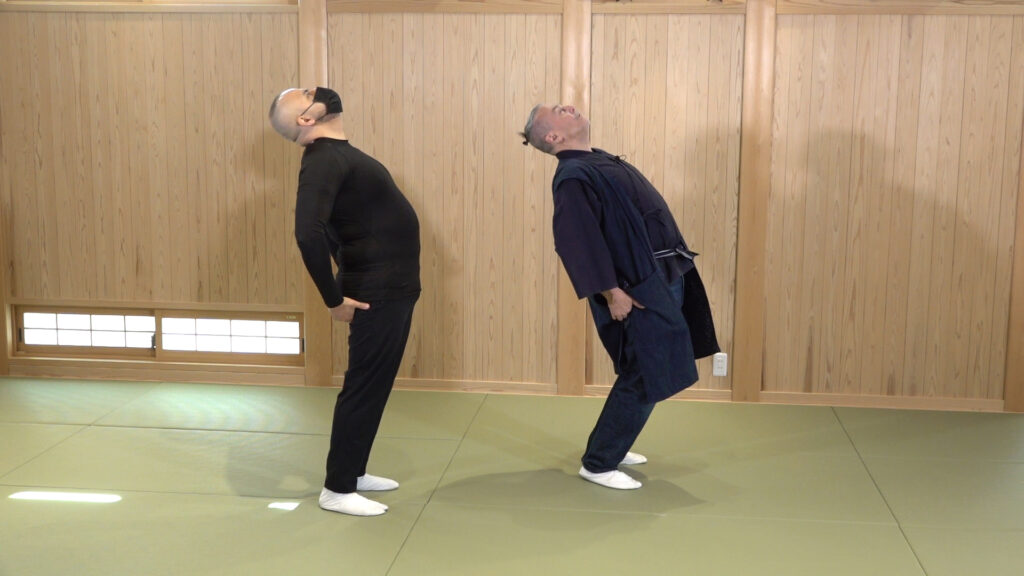 Bend the body forward while slightly bending your knees. See how far your can comfortably lower your hands without stretching your arms or the back of your legs, noting how far your fingers are from the floor. Your weight shifts back on your heels. Then place your hands below the hip joint and push your hips forward, letting your weight shift forward on the balls of your feet. See how far back you can stretch noting what part of the ceiling you can see. After comparing front and back to see which side is easier, repeat the easier side three times, and then compare the opposite side just once. You should notice an improvement in flexibility on the side that was less easy the first time.
Bend the body forward while slightly bending your knees. See how far your can comfortably lower your hands without stretching your arms or the back of your legs, noting how far your fingers are from the floor. Your weight shifts back on your heels. Then place your hands below the hip joint and push your hips forward, letting your weight shift forward on the balls of your feet. See how far back you can stretch noting what part of the ceiling you can see. After comparing front and back to see which side is easier, repeat the easier side three times, and then compare the opposite side just once. You should notice an improvement in flexibility on the side that was less easy the first time.
Hip Rotation
 The hip joint can be loosened by placing the hands on the hips and rotating your pelvis clockwise and counterclockwise. Don’t aim for a perfect oval, but rather try to find which parts of the oval move more or less smoothly. Slow down and ease your way through, or even slide past the areas that don’t feel so smooth. You can extend your range of movement by placing the left and then the right foot forward.
The hip joint can be loosened by placing the hands on the hips and rotating your pelvis clockwise and counterclockwise. Don’t aim for a perfect oval, but rather try to find which parts of the oval move more or less smoothly. Slow down and ease your way through, or even slide past the areas that don’t feel so smooth. You can extend your range of movement by placing the left and then the right foot forward.
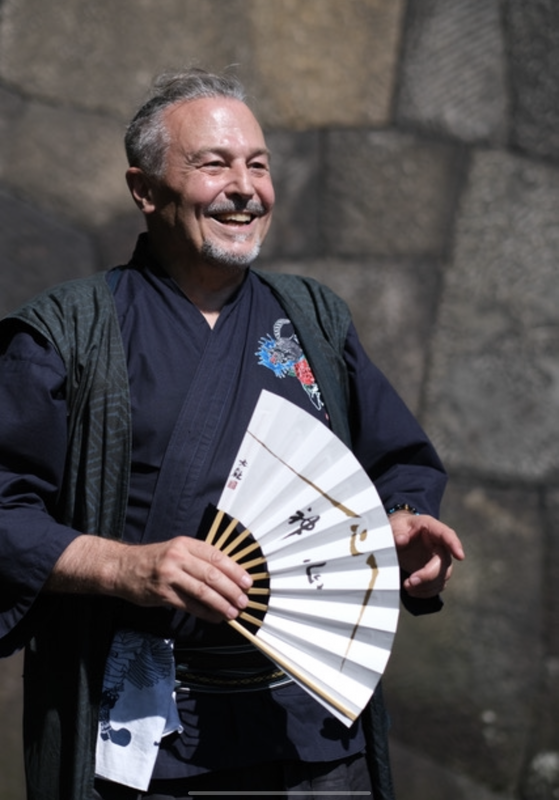 William Reed
William Reed
Born in the United States, William Reed is a long-time resident of Japan, and is currently a Professor of Japanese Culture at the International College of Liberal Arts (iCLA) at Yamanashi Gakuin University. He holds a 10th-dan in Shodo from the Zen Nihon Shodo Rengokai, and is a Headquarters appointed Vice Chairman of the Japan Calligraphy Education Association. He holds an 8th-dan in Aikido from the Aikido Yuishinkai. He holds a Tokubetsu Shihan rank in Nanba, the Art of Physical Finesse. He is aiso Certifed as a shihan in WAGI, a health method based on traditional japanese Kyogen theater, shown to extend years of a healthy lifespan. Director of the International Committee for the Mugairyu Hogyokukai (2nd-dan). A regular commentator on Yamanashi Broadcast Television Tetete TV, Navigator for NHK World Journeys in Japan, numerous documentaries, and has appeared on the long running Sekai Fushigi Hakken (Discover the World’s Mysteries). Certified in 2009 by World Champion of Public Speaking Craig Valentine, he has written a bestseller on this in Japanese 世界最高のプレゼン術 (Kadokawa Books, 2014). He is also author of Song of the Brush Dance of the Ink (Morgan James Publishing, 2022). He appears in the bestselling DVD on Nanba Walking 本当のナンバ歩き, and the DVD on Introduction to Mugairyu Iaido, both published by BAB Japan.
Samurai Walk: Mastery of Sword and Letters:
http://www.samurai-walk.com

